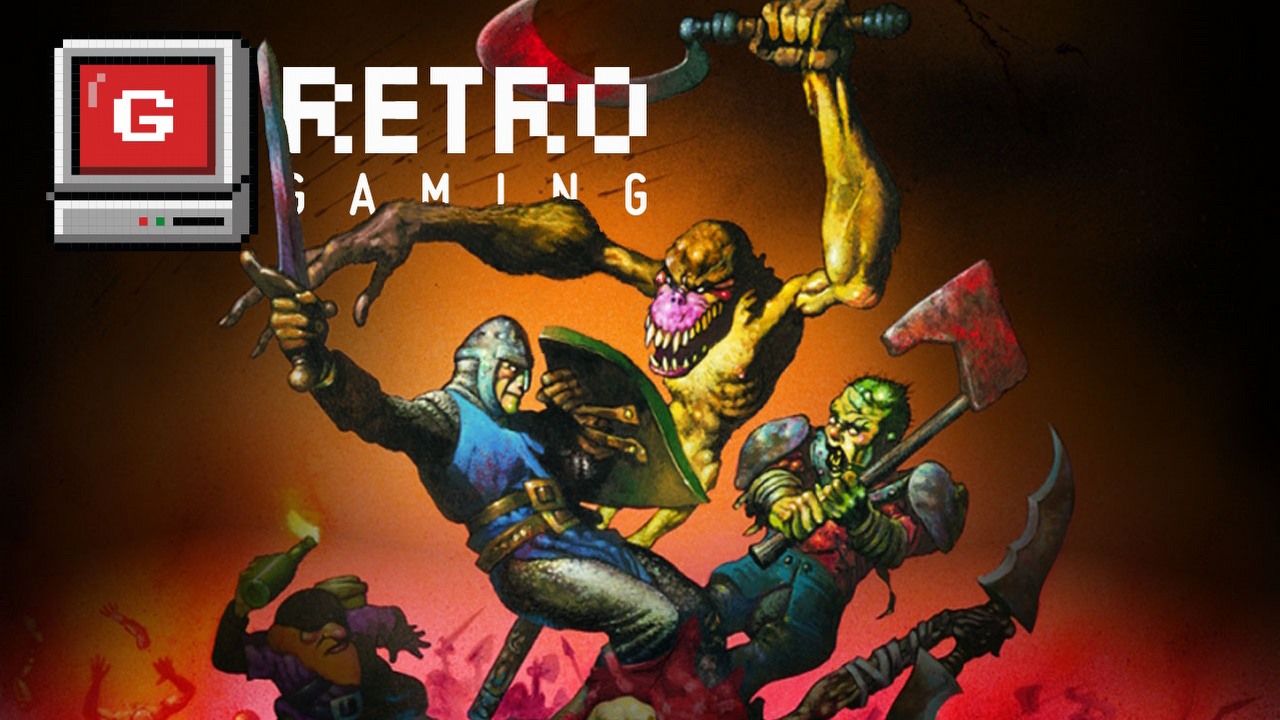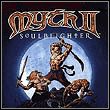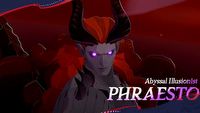Story of the Myth Series, or How to Revolutionize Strategies
With the Myth series, Bungie revolutionized the strategy genre and developed a dark fantasy epic that is still unmatched today.

In the popular mind, Bungie's career is divided into two periods - the first is the time when the team specialized in developing games for Mac computers, and the second is when, thanks to Halo and then thanks to Destiny, it became one of the leading developers of first-person shooters. However, there was a small break between these two eras, during which Bungie developed Oni and, above all, the groundbreaking Myth and its sequel. To this day, no worthy successors have been found for these great and groundbreaking games. I invite you to read the text that I wrote, driven by passion, and I didn't even notice when it exceeded 20,000 characters.
Myth: The Fallen Lords, or how to revolutionize strategies
Bungie was finishing Marathon Infinity in the mid-1990s and beginning to plan its next project. Initially, the team intended to develop another FPS, but everything changed when the first screenshots from Quake were published. The developers realized that their next game would be too similar to the upcoming hit from id Software. So programmer and Bungie co-founder Jason Jones came up with the idea of developing a strategy, presenting to his teammates the vision of a game in which two 100-man armies would fight each other in full 3D. The suggestion received praise - after two months of work, the new FPS was abandoned, and the devs started creating what they called a "grand and gory war game."

The devs set the game in a dark fantasy world. Their sources of inspiration were the movies Braveheart and Apocalypse Now, and above all, the series of novels The Black Company by Glen Cook. At an early stage of development, the team created a list of overused patterns they wanted to steer clear of, such as making references to Tolkien's Middle-earth and Arthurian Legends, or narratives about "boys who must mature and rescue the world." Instead, it was decided to develop a more serious game which, despite its fantastic nature, wouldn't shy away from showing the horror of war.
The priority was also to make the game truly cross-platform. Until now, Bungie focused on Macs. The team indeed converted Marathon 2: Durandal to PC, but the quality of this port was lacking. That's why, with Myth: The Fallen Lords, the devs decided that the game would be developed from the beginning with both types of computers in mind. The developers were fixated on ensuring that the title was identical on both platforms. They also developed their own font manager to ensure uniform letter presentation, which later proved to be extremely useful for publishing partners by enabling easy localization in languages with non-standard characters.
The game focused on the tactical layer of battles. There was no gathering of raw materials or construction of buildings. The devs offered advanced battle mechanisms, taking into account formations and terrain. While the scale of fights was quite significant at that time, there were no large armies involved. Our forces were always so small that the loss of every single unit hurt, especially since they accumulated experience from mission to mission, and at the same time the challenges presented to the player were so difficult that completing them without any losses was practically impossible.
In 1995, betting on 3D in real-time strategy was risky. Warhammer: Shadow of the Horned Rat, released in 1995, was groundbreaking in this respect, but it achieved that with exceptionally simple graphics. However, Bungie perfectly predicted the trends in the RTS genre. Myth: The Fallen Lords was finally released in November 1997, a month after Total Annihilation clearly demonstrated that 3D was the future of strategy games.

Of course, in 1997, PCs were clearly too weak to support large battles in full 3D, especially as a large portion of players didn't yet have dedicated graphics cards, so Bungie couldn't demand them. Therefore, the devs made a compromise and combined 3D maps with units in the form of two-dimensional sprites. This made it possible to achieve the necessary performance despite the extensive scale of battles, weather system, and advanced physics engine, which was responsible for calculating projectile flight and simulating explosions. Furthermore, there was a completely free camera that allowed flying over the battlefield and freely rotating and zooming in on it. So, the developers used modern technology not only to deliver solid graphics, but also to authentically improve the gameplay.
The best result of this, however, were the brilliant dwarven units. They were able to plant mines and throw bombs, which realistically bounced off the surroundings and, for instance, rolled down the slope. This allowed for setting up ambushes and eliminating large groups of enemies, but at the same time it required great precision, because it was easy to make a mistake and decimate your own troops with a bad throw.
Gods, how good music there was!

Writing about Myth, it's impossible not to mention the breathtaking music, which played a key role in creating the game's atmosphere. It was composed by a trio consisting of Martin O'Donnell, Michael Salvatori, and Paul Heitsch. The team also returned in the sequel. Later, Heitsch left the Bungie studio, and the famous soundtrack for the Halo series was developed only by O'Donnell and Salvatori.
Today, the soundtrack of Halo is widely considered to be the highest musical achievement in Bungie's body of work. However, I believe that the soundtrack from Myth deserves just as much recognition. It doesn't have such a recognizable main theme, but The Fallen Lords does offers many more unique, catchy songs (e.g. The Watcher, The Siege of Madrigal , Homecoming, Out of the Barrier, Forest Heart, Sons of Myrgard, while in the adventures of Master Chief Halo Theme almost completely dominates the whole soundtrack of the game.
Myth: The Fallen Lords was a complete game. The game had an extensive story campaign with a truly captivating storyline that evoked the mentioned Black Company. The developers had an exceptional ability to design desperate missions, and upon completing them, we felt a great sense of satisfaction at narrowly avoiding a catastrophe. The plot was also captivating. The world created by the devs was dark and fascinating, and devoid of clichéd Tolkien patterns. It proved to be an excellent move to tell the story mainly through war diaries preceding each mission, written by an anonymous soldier of our Legion.
The multiplayer mode, organized around the Bungie.net service, turned out to be equally successful, offering, among others, one of the first implementations of the now common King of the Hill mode. The developers dedicated a significant amount of time to closed testing with fans before the release, and even after the premiere, they attentively listened to the community's feedback. As a result, the multiplayer mode in The Fallen Lords became one of the most delightful experiences for strategy enthusiasts in the latter half of the 90s.
The game proved to be a great success, the largest in Bungie's career thus far. Over the course of a few months, more than 350,000 copies of Myth were sold. Support for PCs was a bullseye and the studio never returned to developing games exclusively for Mac computers. The game also received numerous awards, including one for the best strategy of the year (this title was given to it by magazines like PC Gamer and Computer Gaming World).
Myth II: Soulblighter - perfect sequel
Bungie quickly began working on the sequel due to the success of the first installment. The 90s were a time when games were developed over the course of half a decade, and the fact that the sequel was built on the foundations of the first game meant that the work progressed quickly, resulting in the debut of Myth II: Soulblighter on the market just thirteen months after the original release.
The game took place sixty years after the events of the original story and narrated the conflict against the dark forces led by the character Soulblighter, whose master we had defeated in The Fallen Lords.

Myth 2 was an extension of the ideas from the original. The devs didn't strive for any revolutionary ideas, but practically every aspect of the game has been improved. The title had improved graphics, a wider range of missions and maps, enhanced AI, greatly improved interface and controls, and expanded multiplayer features. Moreover, it finally offered powerful modding tools - the Fear Editor allowed you to add your own units, and a tool called Loathing let you to create new maps for both multiplayer and singleplayer modes.
The devs couldn't achieve all their plans in the first installment and were only able to do so in the sequel. For instance, although in The Fallen Lords the maps were full of 3D objects, they were static, which greatly limited the developers in designing missions. The engine upgrades in Soulblighter made it possible to include features like a functioning windmill and drawbridges.

Another new feature included maps set indoors, which required a complete redesign of the entire artificial intelligence to ensure that walls obstructed the line of sight (in the original version, enemies could see us through buildings). The devs thought about changing the characters to 3D, but ultimately decided that it would require scaling down the fights. Instead, they greatly improved only the sprite animations, giving them significantly more animation frames.
The players embraced all these changes with enthusiasm. Myth 2 significantly outsold the first installment, becoming the biggest success in Bungie's career at the time. The threshold of 350,000 copies was exceeded within just a month of the premiere, which took much longer for The Fallen Lords.

Oops! We almost deleted the contents of your hard drive!
Not everything went according to plan in the case of Myth 2. On the day the game copies arrived at the stores, the Japanese publisher panicked and contacted Bungie studio, reporting that one of its employees had discovered a major technical error. If we installed the game on the primary hard drive rather than in an additional folder (e.g. in C:\Myth2), using the uninstall program would delete a significant portion of the drive's contents. This happened because the app was designed to delete fan-made maps, even though their files were not in the database. However, due to an error, it ended up deleting everything upwards instead of just removing the contents of the "Data" folder.
On the way to the stores, there were already 200,000 copies, but Bungie decided they couldn't let them get into the hands of players. That's the reason why all the game boxes were withdrawn and the game was fixed, resulting in a cost of 800,000 dollars for the devs. The sum included contractual fines paid to shops, as well as a charge for the factory, as its employees had to manually unpack each box, replace the disk, and then pack everything back again.
You can read more about this story in our article:
Chimera
In 1999, a free expansion called Chimera was released. It was developed by the fan group Badlands in collaboration with Bungie. The studio was very happy with the effects, so it added this expansion to the Total Codex edition, which includes both installments of the series, and the plot of the DLC became part of the official series canon.
Explosion of mods

Adding modding tools turned out to be a hit. Players have created numerous maps over the years since the premiere, for both single player and multiplayer games, as well as a variety of extensive story campaigns.
Furthermore, many fans took it a step further and, instead of developing their own projects within the series' universe, utilized these tools to relocate the action to different settings, such as World War II or the Civil War. Some of these projects were so impressive that they received a commercial version. That was the case with Green Berets, a game set during the Vietnam War, which was initially released in a box, only to later make it available as a free mod for Myth II.
Myth III: The Wolf Age, or a change at the helm
In 1999, Take-Two Interactive acquired a 19.9% share in Bungie. However, a year later the entire studio was taken over by Microsoft. Take-Two acquired the rights to the Myth brand and began working on the third installment as part of the settlement.
The method of choosing the developer was quite unusual. The publisher was considering proposals from several studios. He was most impressed by the one presented by Scott Campbell, the CEO of Contraband studio, which had previously ported two games from Ritual Entertainment - SiN and Heavy Metal: F.A.K.K. 2 - to Mac computers. However, Take-Two was concerned that the team lacked sufficient experience to develop their own game from the ground up. Nevertheless, fate favored Campbell in this case - Ritual was actually planning to open a new division in the Californian city of Irvine, close to the headquarters of Contraband. So, Take-Two proposed that the people from Contraband join selected developers from Ritual and set a new studio called MumboJumbo.
Fans, of course, were full of concern. Bungie reassured them that their successors would be able to deliver a worthy installment of the series. MumboJumbo approached the task sensibly. The devs concluded that radically altering the series formula wasn't worthwhile and instead concentrated on improving the graphics and physics, made possible by technological advancements since the release of the second installment. The game used the Myth 2 engine, leading to the recruitment of moderators from the game's community for assistance. Initially, they only helped with technical issues and map design, but the management of MumboJumbo quickly understood how invaluable the knowledge of fans is, and they also became a key element of the team responsible for the plot. They also had the power to veto, which allowed them to reject elements that would contradict the canon of the earlier two installments.

Myth III: The Wolf Age hit store shelves in October 2001. The game was a prequel, showing events that took place a thousand years before the events of The Fallen Lords. The title provided a major graphical improvement, both in terms of terrain and effects, and most importantly, it introduced three-dimensional unit models to the series at last. Dynamic lighting and shadow systems have also been added. Another interesting development was the boosting of unit morale when fighting alongside heroes.
The game didn't match Bungie's masterpieces, but overall it maintained a high level, at least in single player mode. It had an outstanding campaign with a captivating story, significantly broadening the series' narrative canon, and wowed with its graphics and atmosphere. Despite the engine improvements, the lower budget was clearly noticeable. The game lacked, for instance, beautiful cutscenes, the multiplayer was much more modest, and the level of technical refinement left much to be desired.
MumboJumbo deserved more
It's hard to blame the people from MumboJumbo for these problems. Even in 2001, a 10-month development period was ridiculously short for a title of that scale. Even worse, the publisher treated the studio as a one-off - the entire team was laid off on the day of the Myth III: The Wolf Age release. They weren't even allowed to finish working on the first patch.
Today, the game is considered a noteworthy installment of the series, even if it doesn't match up to Bungie's hits. The multiplayer community primarily plays Myth 2, so The Wolf Age's main value lies in its single player mode, which is excellent. Even the lack of official patches isn't a problem, because fans, with the blessing of the people from MumboJumbo, have developed unofficial patches.
Myth today
Unfortunately, the series is currently not available for digital distribution. So you have to rely on used CD copies. Fortunately, there is no big problem with getting them today.
On the other hand, if you want to save money, it's worth considering purchasing only Myth 2, as fans have used mods to recreate all the multiplayer maps from The Fallen Lords and also transferred the entire story campaign from the first game to it.
Myth lives thanks to mods
Myth III: The Wolf Age ended up being the final installment of the series, and the servers for all parts of the series were shut down long ago. Fortunately, the fans didn't agree to the death of this brand and spent over two decades creating improvements and new content. This continues to happen as the most crucial projects are still in progress, and new maps are regularly added.
So let's discuss which projects are worth installing at the start.
Myth: The Fallen Lords
For the first installment, we recommend:
- Myth TFL Patch 1.5 is an unofficial update being developed by the Project Magma group. The project modernizes the engine and improves the graphics, as well as removes most of the bugs. This makes the game fully compatible with modern hardware (which also means support for high-resolution widescreen) and operating systems.
- Myth Camera Speed Kit - optionally, it's also worth installing this mod, as it speeds up camera movement to a level typical of modern strategies. The project also has a version for Myth 2 and a version for Myth 3.
You will experience complete comfort during gameplay with these two projects.
Myth II: Soulblighter
The heart of the series community beats mainly for Myth II: Soulblighter. This game has the highest number of mods and continues to receive the strongest support from fans up to this day.
- Project Magma – the most important mod for the entire series. It updates the engine, ensures it works with modern PCs and monitors, fixes bugs, enhances gameplay, brings back multiplayer, improves controls, and expands the game modification options. Today, practically all mods for Myth II require you to install Project Magma.
- The Fallen Levels – this mod brings the entire campaign from Myth: The Fallen Lords to Myth 2. This allows us to play it, enjoying many gameplay and graphics improvements offered by the sequel.
- Detail Texture Megapack and ESRGAN Upscale Pack - two packs that enhance textures. Install both.
Depending on the version of Myth II you have, the Chimera expansion may be missing, but that's not an issue because it's available for free download.
Currently, the multiplayer community of Mytha II primarily enjoys playing on the Gate of Storms (GoS) server. To join them, you must create an account on the official server website. The group of fans still playing this title isn't large, so you won't always find people willing to play. However, arranging a match is not a problem, and a big tournament is organized every year.
Myth III: The Wolf Age
Myth III: The Wolf Age has much less fan support than the second installment of the series, but don't worry - modders haven't abandoned this unfinished game. MumboJumbo gave a blessing to the Flying Flip fan group, allowing them to create unofficial updates for 16 years. This results in the so-called Myth III 1.3.1 Patch. The project from this group hasn't been developed since 2018, but before the developers abandoned it, they resolved most of the game's issues and adjusted it for modern PCs, so you don't need anything more.
Unfortunately, there are no more fan servers available for Myth 3 today, making the game only suitable for single player mode. People who still fight online in this world simply play Myth 2.
Few final words
Myth III: The Wolf Age marked the conclusion of the series, and it's highly unlikely that we will ever get a new release. It's even more sad that this type of strategy wasn't further developed by other devs (the only meaningful spiritual successor being Nordic Warriors, released a few years ago, but this title falls short in terms of atmosphere and campaign compared to the original).
Even though modern publishers fail to recognize the value of this brand, it remains an exceptional trilogy, providing some of the most captivating campaigns in the strategy genre and multiplayer, offering endless entertainment for years to come. Every PC gamer should experience playing this brand at least once in their life, especially with the added comfort of mods.
- Before they gave us STALKER, they made a cult RTS. Cossacks sparks a real explosion of nostalgia today
- This is how you unlock new gods in Anno 117: Hall of Fame step-by-step
- There is a surprising story behind one of the more colorful FPSs in history. No One Lives Forever' success was influenced by the „Bond” problem
0

Author: Adrian Werner
A true veteran of the Gamepressure newsroom, writing continuously since 2009 and still not having enough. He caught the gaming bug thanks to playing on his friend's ZX Spectrum. Then he switched to his own Commodore 64, and after a short adventure with 16-bit consoles, he forever entrusted his heart to PC games. A fan of niche productions, especially adventure games, RPGs and games of the immersive sim genre, as well as a mod enthusiast. Apart from games, he devourers stories in every form - books, series, movies, and comics.
Latest News
- End of remote work and 60 hours a week. Demo of Naughty Dog's new game was born amid a crunch atmosphere
- She's the new Lara Croft, but she still lives in fear. Trauma after Perfect Dark changed the actress' approach to the industry
- „A lot has become lost in translation.” Swen Vincke suggests that the scandal surrounding Divinity is a big misunderstanding
- Stuck in development limbo for years, ARK 2 is now planned for 2028
- Few people know about it, but it's an RPG mixing Dark Souls and NieR that has received excellent reviews on Steam, and its first DLC will be released soon


